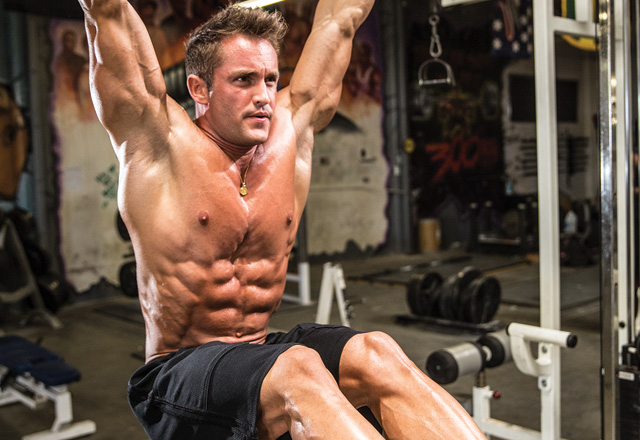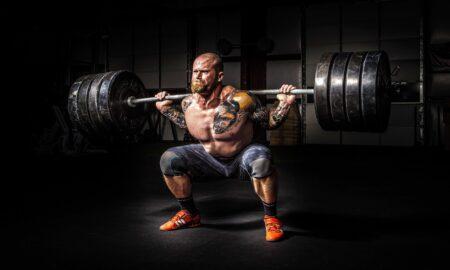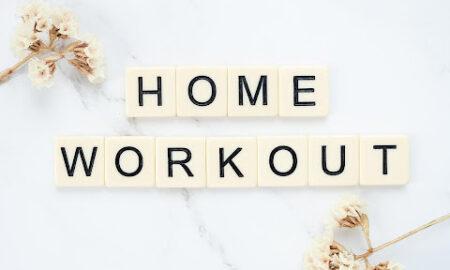


Do you ever stop and think about what you want out of your workouts? Or do you just show up to the gym with a vague idea of what you are going to do that day? Even if you know specifically what you want to accomplish and how to get there, how do you go about measuring your progress?
These may be hard questions, but they are necessary. If you’re serious about getting the most return on the time and effort you invest in the gym, you’re going to need to know these answers. You must have a strategy that allows your progress to be quantified, to indicate whether or not you’re obtaining the result you initially set out to achieve or if you’re just spinning your wheels.
The Common Denominator
Regardless of what your answers are to those heavy-hitting questions, you can almost always tie your goal back to one common denominator: strength.
I want to discuss the importance of being strong and how it raises your ceiling to increase muscle mass, improve your level of physical preparedness for sport performance, boost your ability to generate maximum power, and prolong your ability to sustain a given amount of effort over time.
Strength itself is a relative term, and your goal will ultimately determine just how strong you need to be. Those training for size may not need to be as strong as people training for sport, and people training for one sport may need to be stronger than people training for another sport. But the common theme here is we all need to be strong, because strength is the foundation upon which all other physical abilities are built.
Even people training primarily to reduce their body fat will benefit from increased strength levels because the heavier the weight that is being lifted, the greater the effort required to overcome it will be. This will translate into more muscle fibers being stimulated and more calories being utilized to provide the working muscles with the energy to perform and recover from the work, all of which will positively influence body composition.
I know this to be true, not just because it makes sense in theory, but because it played a pivotal role in my own personal transformation. A lot of people ask me what my secret was to transforming my physique from a skinny guy to a professional fitness model, and many are surprised to hear that I spent a great deal of time getting my numbers up.
There is not one goal I can think of in which strength doesn’t matter. That isn’t to say that everyone must get as strong as possible—far from it. This simply suggests that there is an individual “threshold” in terms of necessary strength to maximize your capacity to develop whatever physical goal it is that you wish to achieve. Once you’ve reached that threshold, your focus can be placed on maximizing that specific attribute. This, of course, is subject to the “law of diminishing returns,” which suggests that strength up until a certain point will have a very positive impact on increasing your capacity to improve other physical attributes, but once that point is reached, it will not have the same effect. Unfortunately, many fail to ever reach that threshold, so until then, all focus should be on increasing strength.

Strength Is Black And White
One of the best things about strength in comparison to other goals is that the results are black and white; you’re either stronger, or you’re not. You either lifted more, or you didn’t. Assuming a lift is performed in the exact same manner every time, strength is a very quantifiable way of measuring progress, and we need a quantifiable way of tracking development in order to ensure what we are doing is working.
Strength can also provide clues in terms of what needs to be improved upon and prioritized in your training program. Because a chain is only as strong as its weakest link, strength testing can highlight whether or not you have any glaring imbalances that need to be corrected. Failing to do so will ultimately hold you back at some point or another anyway, so it’s in your best interest to identify and correct them sooner rather than later. Imbalances not only prevent further strength from being gained, but they can greatly contribute to the development of chronic pain.
If you experience shoulder pain and notice that your overhead press is significantly weaker than your flat-bench press, this may be a clue that your shoulders are weak and why you are more prone to shoulder pain. If you experience knee pain and notice that your front squat is significantly weaker than your back squat, this may be a clue that your hamstrings are weak.
Generally, chronic pain is nothing more than the result of repetitive stress placed on a tissue because one muscle isn’t doing its job. Why it’s not doing its job is another story, but strength imbalances can be used as a quick diagnostic tool to shed light onto why something is happening. If you’re experiencing pain, you should get it looked at by a professional, but the point is that strength can be used to help understand if your training is causing the pain in the first place. If it is, you ought to rethink your plan.
Make The Load Your Priority
Over the last few years I have noticed that a lot of people link the development of muscle to “time under tension,” but what they fail to realize is that if they are not under a sufficient load, then all the time under tension in the world means nothing. I realized this early on, and from that point forward I decided that I needed to get my strength up to the point that the loads I was using would promote the desired response. It was only when I got my strength to a respectable amount in relation to my bodyweight that I experienced the best gains of my life. Once I reached my individual threshold, all the other types of training that I was using before began to magically work wonders for my physique. But, like everything, my body has adapted, and my threshold is higher now, meaning that my body has filled out and caught up, and by further increasing my strength, I believe it will unlock the door to further muscle growth.
Strength Thresholds
My goal is to increase my strength on what I consider to be the four foundational lifts upon which all others are built. Consider these minimum-requirement strength thresholds and use them as your metric for measuring progress:
Shoulder Press: 0.8-1.2 x Bodyweight
Bench Press: 1.25-1.5 x Bodyweight
Squat: 1.75-2 x Bodyweight
Deadlift: 2-2.5 x Bodyweight
Strength makes everything easier. Once I’m able to reach the upper end of these numbers, I believe my ability to put on muscle will improve dramatically. These numbers reflect my current individual thresholds, and once I reach them, I’ll be switching gears to a more conventional bodybuilding type of routine to pack more muscle onto my frame than ever before.
By Vince DelMonte
Vince DelMonte is a certified trainer, nutrition consultant, fitness model and author of No Nonsense Muscle Building.





















You must be logged in to post a comment Login